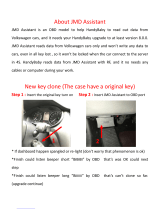
SINGLE-ACTING CIRCUIT (STD. LIFT-HOLD-LOWER) TROUBLESHOOTING
Only qualified individuals trained to understand mechanical devices and their associated electrical
and hydraulic circuits should attempt troubleshooting and repair of this equipment
! Care should be taken to identify all potential hazards and comply with applicable safety procedures before beginning work.
Consult the factory for problems at time of installation, or for any problems not addressed below
(Problem, observation, remedy)
Unit doesn’t raise, motor doesn’t run.
No power supply voltage. Tripped branch circuit breaker or fuse(s).
Use a meter and conventional electrical troubleshooting techniques to determine cause of the fault.
No control voltage. Blown control relay fuse due to short in controls.
Use a meter and conventional electrical troubleshooting techniques to determine the cause of the fault.
Unit doesn’t raise, but motor runs.
Suction screen blocked; air being drawn into the suction hose; reservoir not vented.
Solenoid valve stuck open by contamination or bent valve stem.
Check valve stuck open by contamination.
Unit doesn’t raise (or raises slowly); noticeable noise (hum, buzz, chatter, or squeal); motor or pump becomes warm quickly.
Solenoid valve stuck open.
Low control voltage causing relay coil chatter.
Pressure relief opening.
Unit raises, but motion is jerky.
Bleed air from the cylinder per manual’s instructions in the hydraulic section.
Unit raises, but lowers very slowly when the motor stops.
Solenoid stuck open slightly by speck of contamination or a bent valve stem.
Check valve stuck open by speck of contamination.
Unit raises, but lowers quickly when the motor stops.
Solenoid valve stuck open by contamination or bent valve stem.
Check valve stuck open by contamination.
Unit doesn’t lower.
A “snap” or “click” can be heard upon pressing the “DN” button due to a velocity fuse locking.
Bleed air from the cylinder per the owner’s manual’s instructions.
Check the load against the unit’s capacity rating.
Perimeter pinch point guard has lost continuity.
Check for a made switch, bad connection in the wiring, or a broken wire.
Solenoid coil circuit has lost continuity, or coil is bad.
Check the coil using a meter’s diode-check feature. (Checking with the meter’s ohms function will not give an
accurate indication.)
Unit lowers, but motion is jerky.
Air in hydraulic system, esp. the cylinder.
Bleed air from the cylinder per the owner’s manual’s instructions in the hydraulic section.
Unit lowers, but slower than usual.
Flow spool stuck.
Check the flow spool per the owner’s manual’s instructions in the hydraulic section.
Return line (3/8” clear hose) pinched off.
Unit lowers, but faster than usual.
Flow spool stuck.
Check the flow spool per the owner’s manual’s instructions in the hydraulic section.
Overload protection trips repeatedly.
Motor is single-phasing, if power supply is three-phase.
Check supply voltage at disconnect, motor contactor, and motor to find where one leg of voltage is being lost.
Low supply voltage (typically only with 115V units).
Check the supply voltage when the motor is operating under load conditions.












